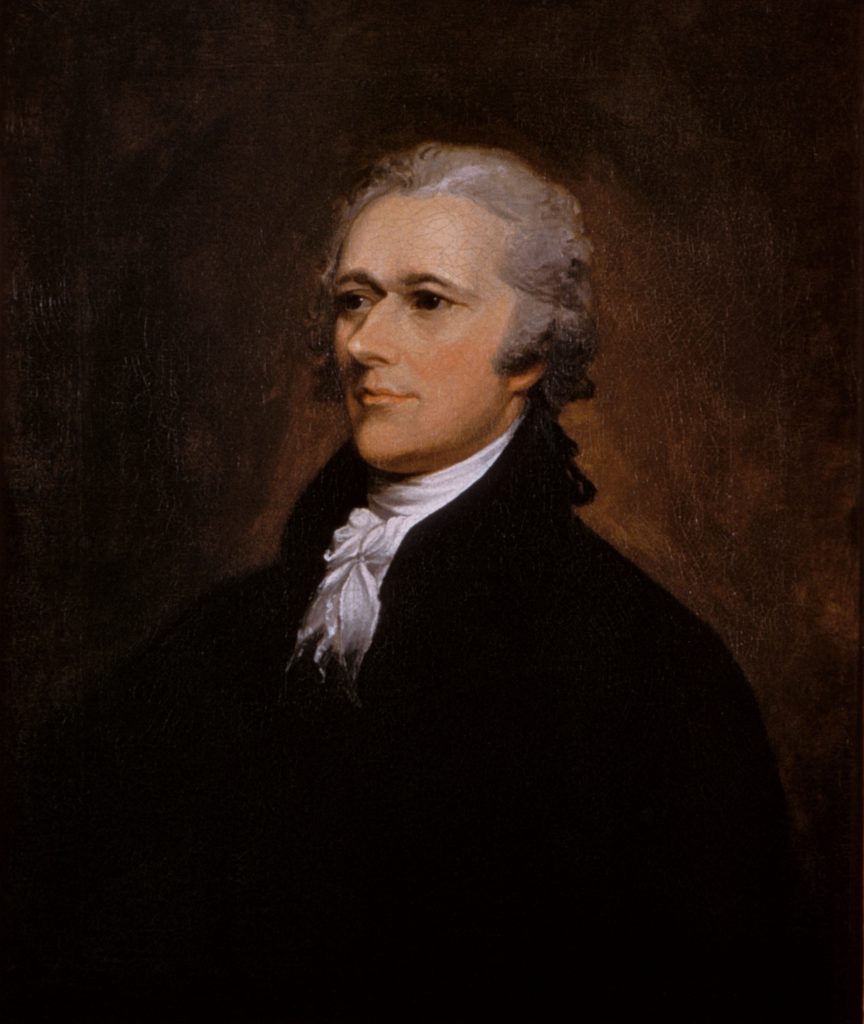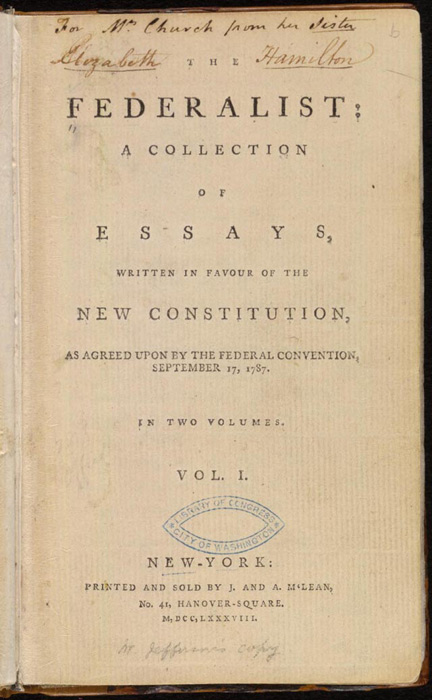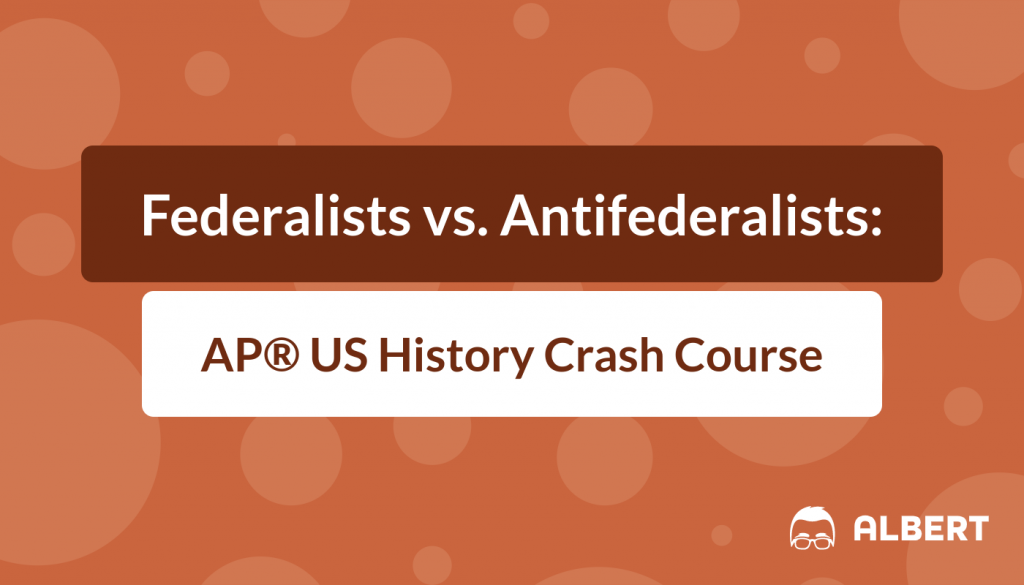As a student of AP® US History, you probably know the Constitution and all its amendments like the back of your hand. But, did you know that the story of the Constitution is so much more than what you may have heard? Ratifying the Constitution was a long and drawn out process, mostly because the states were divided into what they wanted for a government. Some states wanted a strong, central government. The citizens that shared this idea were called Federalists. The citizens that opposed the idea of one principal government were the Antifederalists, who supported the idea of small, state governments.
The separation of the country into these two groups made it very difficult for the leaders of the Philadelphia Convention, who first drafted the Constitution, to feel confident that the states would approve the document. The previously written Articles of Confederation stated that approval of the Constitution had to be unanimous for it to become ratified. Leaders of the convention were in fear that a unanimous decision would soon be impossible.
The drafters of the Constitution then decided to bend the rules a little bit and discard the Articles of Confederation completely when piecing the final drafts of the Constitution. Since the Articles of Confederation were basically thrown out the window, there was no rule stating that the Constitution could only be ratified if all of the states agreed. Instead, the delegates suggested that only 9 of the 13 states had to approve the Constitution for the document to be ratified.
Even still, getting the majority of the states to agree on approving the Constitution was no small feat, especially when the voters were divided into two different groups with such differing views on how their country’s government should be ruled.
Understanding the opposing views of the Federalists and the Antifederalists is vital to studying AP® US History. After all, these two groups were who ultimately forged our nation and who created the basis for today’s two-party political system. Now let’s dive into what the Federalist vs. Antifederalist division was all about.
Who Were the Federalists?

The Federalists were the people who backed the Constitution. For the most part, Federalist citizens were well educated and made up the wealthier classes of the country. They believed that there was an overwhelming need for a centralized, powerful government. They believed that having such a government would help protect their economic status, making sure they wouldn’t lose a cent of their wealth. According to the Federalists, a centralized government also would significantly avoid fighting between states. If there were one central, federal law on an issue, it would prevent states with opposing views on that particular issue from fighting.
Benjamin Franklin, George Washington, Alexander Hamilton, and James Madison were just a few of the influential fathers of our country who associated as Federalists.
Who Were the Antifederalists?
The Antifederalists weren’t nearly as easy-going as their Federalist rivals. Unlike the wealthy Federalists, the farming lower class Antifederalists had a strong opposition for big government; they were very devoted to small, state governments.
They had a bone to pick about the absence of a Bill of Rights in the Constitution. The Antifederalists believed that there should be something stating the basic rights and liberties sanctioned to each citizen. Antifederalists also feared that a centralized government would soon become too controlling and abuse the powers assigned to it, such as the power of taxation. They believed that abusing this power would not only lead to the unfair taxation of lower class citizens, but also to the deterioration of states’ rights. This in particular struck fright into the hearts of the Antifederalists.
These states rights advocates were particularly afraid of the potential for government failure. Antifederalists had a strong belief that a centralized republican country couldn’t possibly rule a country the size of America.
What Were the Federalist Papers?

Just when it seemed like the differences between Federalists and Antifederalists would leave the country torn and without a Constitution, a few Federalists stepped in to save the day. James Madison, Alexander Hamilton, and John Jay came together and developed a sequence of essays to ease the fears of the Antifederalists. In these essays, now known as the Federalists Papers, Madison, Hamilton, and Jay solved many problems that the Antifederalists had with the Constitution. Most importantly, they suggested a series of checks and balances be put into place within the Constitution to enforce limitations on the government.
The Federalist Papers were the saving grace of the Constitution. With the help of these essays, the Federalists gained enough backing for the Constitution to be properly ratified. Eventually, all of the states ratified the Constitution.
As you now understand, it was no easy accomplishment for the Constitution to become ratified. This was because the country was divided in a war of governmental ideals. Essentially, it was Federalists vs. Antifederalists in the battle for the nation. Thankfully, everything worked out and the United States was able to implement the Constitution we know and love today.
The Constitution is an incredibly important part of history and this is reflected in the AP® US History tests over the past few years. In 2008, an essay question outlining the differences between the views of the Federalists and Antifederalists was even a part of the exam. According to the AP® Central on the College Board’s website, an essay that received an 8-9 on the old APUSH exam (pre-2014-2015) had a thesis that contained a clear definition as to why the Antifederalists opposed the ratification of the Constitution. Rubrics from previous AP® exam essays are a great way to study, because it is made clear exactly what the scorers are looking for. I would greatly suggest taking this rubric focusing on the Federalists vs. Antifederalists debate and using it to formulate a practice thesis; utilizing the information you’ve learned from this article, of course!
As long as you understand the differences between the views of the Federalists and the Antifederalists and how they affected the ratification of the Constitution, you’re bound to be on your way to passing the AP® US History exam.
Looking for AP® US History practice?
Kickstart your AP® US History prep with Albert. Start your AP® exam prep today.









2 thoughts on “Federalists vs. Antifederalists: AP® US History Crash Course”
your discussion of Federalist/anti federalist discusses focus on 8-9 rubric–that is old–current rubrics are 6-7 points
Thanks, we’ve made a note of this and updated the mention 🙂
Comments are closed.